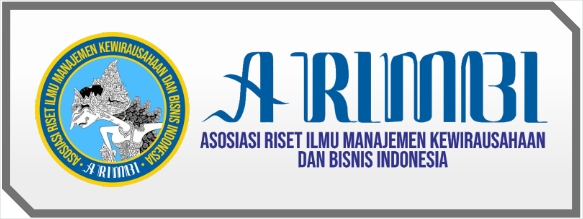The Impact of Liquidity Risk Optimization on the Stability of Islamic Commercial Banks in Indonesia
DOI:
https://doi.org/10.55606/iceb.v1i2.231Keywords:
Liquidity Risk, Credit Risk, Operational Efficiency, Bank StabilityAbstract
This research was conducted with the aim of knowing the effect of liquidity risk on bank stability with credit risk and operational efficiency as intervening variables for Islamic Commercial Banks in Indonesia for the 2010-2019 period. This study uses secondary data on the financial reports of Islamic commercial banks issued by the financial services authority (OJK) during the period 2010 to 2019. The sample was taken using a non-probability sampling technique, namely purposive sampling in order to obtain 11 Islamic commercial banks. The analysis technique is carried out by testing 6 (six) hypotheses. The results of this study indicate that liquidity risk can have a direct effect on bank stability, but there are also credit risk and operational efficiency variables play a role in mediating the relationship to the stability of the bank. Meanwhile, liquidity risk is not able to directly affect the operational efficiency of the bank.
References
Akhter, N. (2018). The Impact of Liquidity and Profitability on Operational Efficiency of Selected Commercial Banks in Bangladesh: A Panel Data Study. Global Journal of Management and Business Research: A Administration and Management, 18(7).
Ali, M., Sohail, A., & Khan, L. (2019). Exploring the role of risk and corruption on bank stability: evidence from Pakistan. Journal of Money Laundering Control, 22(2), 270–288. https://doi.org/10.1108/JMLC-03-2018-0019
Amara, T., & Mohamed, M. (2019). The Impact Of Liquidity And Credit Risks On The Bank Stability. Journal of Smart Economic Growth, 4(2), 97–116.
Amin, SIM, Mohamad, S., & Shah, ME (2017). Do Cost Efficiency Affects Liquidity Risk in Banking? Evidence from Selected OIC Countries (Does the Cost of Proficiency Affect Liquidity Risk in Banking? Evidence from Selected OIC Countries) International Center for Education in Islamic Finance. 51(2), 55–71.
Bello, N., Hasan, A., & Saiti, B. (2017). The mitigation of liquidity risk in Islamic banking operations.Business Perspectives, Banks and Bank Systems, 12(3), 154–165.
Budiman, F. (2016). The Influence of the Quality of Implementation of Good Corporate Governance (GCG) on the Level of Return and Risk of Financing of Islamic Banks in Indonesia. MUQTASID Journal of Islamic Economics and Banking, 7(2), 1–21.
Dacholfany, M. I. ., Khataybeh , A. M. ., Lewaherilla, N. C. ., Yusuf , M. ., Sihombing , H. B. M., & Chang , M. L. (2022). APPLICATION OF THE BALANCED SCORE CARD CONCEPT AS A HUMAN RESOURCE PERFORMANCE MEASUREMENT TOOL AT THE MINISTRY OF HIGHER EDUCATION IN INDONESIA. MULTICULTURAL EDUCATION, 8(04), 1–13. Retrieved from https://mccaddogap.com/ojs/index.php/me/article/view/78
Dendawijaya, L. (2005). Banking Management (FS Risman (ed.)). Indonesian Ghalia.
Dewi, T., Adi, I., & Rokhim, R. (2019). Mudarabah and Musharakah financing impact Islamic Bank credit risk differently ? Research in International Business and Finance, 49(September 2017), 166–175. https://doi.org/10.1016/j.ribaf.2019.03.002
Djebali, N., & Zaghdoudi, K. (2020). Threshold effects of liquidity risk and credit risk on bank stability in the MENA region. Journal of Policy Modeling, 42(5), 1049–1063. https://doi.org/10.1016/j.jpolmod.2020.01.013
Elsa, & Utami, W. (2014). Comparative Study of Efficiency, Asset Quality and Stability in Islamic Commercial Banks and Conventional Commercial Banks in Indonesia for the 2010-2014 Period. Journal of Economics and Social Sciences, 4(1), 104–114.
Fauziah, Febriyanti, A., & Nisa, NH (2020). Financial Inclusion and Financial System Stability (Bank Z-Score) in Asia Department of Business Administration, State Polytechnic of Malang, Indonesia. Optimal Journal of Economics and Entrepreneurship, 14(1), 30–47.
Fiordelisi, F., Marqués-Ibáñez, D., & Molyneux, P. (2010). Efficiency and risk in european banking.
Ghassan, HB, & Guendouz, AA (2019). Panel modeling of z-score : evidence from Islamic and conventional Saudi banks. International Journal of Islamic and Middle Eastern Finance and Management, 12(3), 448–468. https://doi.org/10.1108/IMEFM-04-2018-0122
Ghenimi, A., Chaibi, H., Ali, M., & Omri, B. (2017). Borsa _ Istanbul Review The effects of liquidity risk and credit risk on bank stability : Evidence from the MENA region. Borsa Istanbul Review, 1–11. https://doi.org/10.1016/j.bir.2017.05.002
Hassan, MK, Khan, A., & Paltrinieri, A. (2018). Liquidity Risk, Credit Risk and Stability in Islamic and Conventional Banks SC. Research in International Business and Finance. https://doi.org/10.1016/j.ribaf.2018.10.006
Jensen, C., & Meckling, H. (1976). Theory Of The Firm : Managerial Behavior , Agency Costs And Ownership Structure I . Introduction and summary In this paper WC draws on recent progress in the theory of (1) property rights, firm. In addition to tying together elements of the theory of e. 3, 305–360.
Lambert, RA (2001). Contracting theory and accounting. Journal of Accounting and Economics, 32(February 2000), 3–87.
Lepetit, L., & Strobel, F. (2014). Bank insolvency risk and time-varying Z-score measures. Journal of International Financial Markets, Institutions and Money, Elsevier, 25, 73–87. https://hal.archives-ouvertes.fr/hal-01098721
Lotto, J. (2018). The Empirical Analysis of the Impact of Bank Capital Regulations on Operating Efficiency. International Journal of Financial Studies, 6(2), 34.
https://doi.org/10.3390/ijfs6020034
Martin, Č., & Hesse, H. (2010). Islamic Banks and Financial Stability : An Empirical Analysis.
Journal of Financial Services Research, 38, 95–113.
Mohammed. (2005). Sharia Financing Management. UPP AMP YKPN.
Nugroho, L., & Anisa, N. (2018). The Influence of Parent Bank Management, Asset Quality, and Efficiency on the Stability of Islamic Banks in Indonesia (2013-2017 Period). Journal of Innovation and Business, 6, 114–122.
Ozili, PK (2018). Banking stability determinants in Africa. https://doi.org/10.1108/IJMF-01-2018- 0007
Polizzi, S., & Scannella, E. (2020). The Role of Capital and Liquidity in Bank Lending : Are Banks Safer ? 11(January), 28–38. https://doi.org/10.1111/1758-5899.12750
Ramlall, I. (2018). The Banking Sector Under Financial Stability.
Rupeika-apoga, R., Rom, I., & Grima, S. (2020). Chapter 16 The Determinants Of Bank's Stability : Evidence From Latvia , A Small. Contemporary Studies in Economic and Financial Analysis, 104, 235–253. https://doi.org/10.1108/S1569-375920200000104016
Rupeika-apoga, R., Zaidi, SH, Thalassinos, YE, & Thalassinos, EI (2018). Bank Stability : The Case of Nordic and Non-Nordic Banks in Latvia. International Journal of Economics and Business Administration, VI(2), 39–55.
Safa, M., Ali, MH, Ismail, A., Amin, IM, Ali, MH, & Nor, SM (2018). Cost Efficiency and Liquidity Risk in Banking : New Evidence from OIC Countries. International Journal of Business and Management Science, 8(2), 255–276.
Sari, K. (2018). The Influence of Murabahah Financing, Capital Adequacy Ratio (Car), Financing To Deposit Ratio (Fdr), And Inflation on Profitability (Roa) With Non Performing Financing (Npf) As Intervening Variables in Islamic Commercial Banks (2013-2017 Period). Journals of Chemical Information and Modeling, 142.
https://doi.org/10.1017/CBO9781107415324.004
Sarwono, J. (2012). Path Analysis for Thesis Research, Theses and Dissertations. Elex Media Komputindo Kompas Gramedia.
Sunardi, N. (2017). The Effect of Intellectual Capital (Ib-Vaic Tm), Fdr and Car on Cost Efficiency and Its Implications for the Performance of Indonesian Sharia Commercial Bank Companies. Journal of Securities, 1(2581), 1–17.
Syatiria, A., & Hamdaini, Y. (2017). Credit Risk, Stability, and Financing Policy. Sriwijaya Journal of Management and Business, 15(3).
Vasilyeva, T., Sysoyeva, L., & Vysochyna, A. (2016). Formalization Of Factors That Are Affecting Stability Of Ukraine Banking System. Risk Governance & Control: Financial Markets & Institutions, 6(4), 7–11.
Warjiyo, P. (2006). Banking System Stability and Monetary Policy: Linkages and Developments in Indonesia. 8(4), 429–454.
Wulandari, MV, & Utami, SA (2019). Determinant of Non-performing Financing in Indonesia Islamic Bank. International Conference on Islamic Economics, Business, and Philanthropy, 2019, 453–468. https://doi.org/10.18502/kss.v3i13.4223
Yusuf, M., Fitriyani, Z., Abdilah, A., Ardianto, R., & Suhendar, A. (2022). THE IMPACT OF USING TOKOPEDIA ON PROFITABILITY AND CONSUMER SERVICE. Jurnal Darma Agung, 30(2), 559 - 573. doi:10.46930/ojsuda.v30i2.2273
Yusuf, M., Sutrisno, S., Putri, P., Asir, M., & Cakranegara, P. (2022). PROSPEK PENGGUNAAN E-COMMERCE TERHADAP PROFITABILITAS DAN KEMUDAHAN PELAYANAN KONSUMEN: LITERATURE REVIEW. Jurnal Darma Agung, 30(1), 786 - 801. doi:10.46930/ojsuda.v30i3.2268
Yuhasril, Y. (2019). The Effect of Capital Adequacy Ratio ( CAR ), Non Performing Loan ( NPL ), Operational Efficiency ( BOPO ), Net Interest Margin ( NIM ), and Loan to Deposit Ratio ( LDR ), on Return on Assets ( ROA ). 10(10), 166–176. https://doi.org/10.7176/RJFA
















